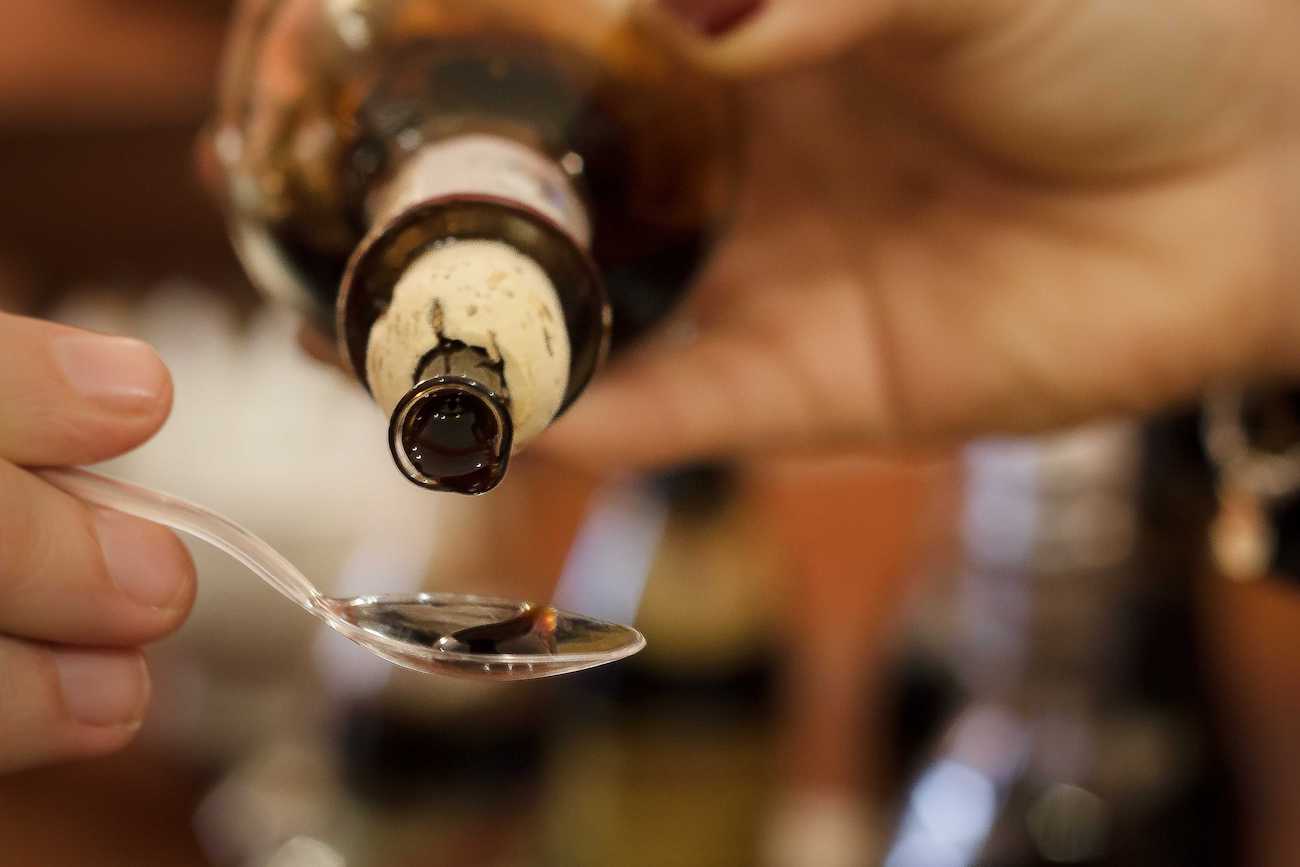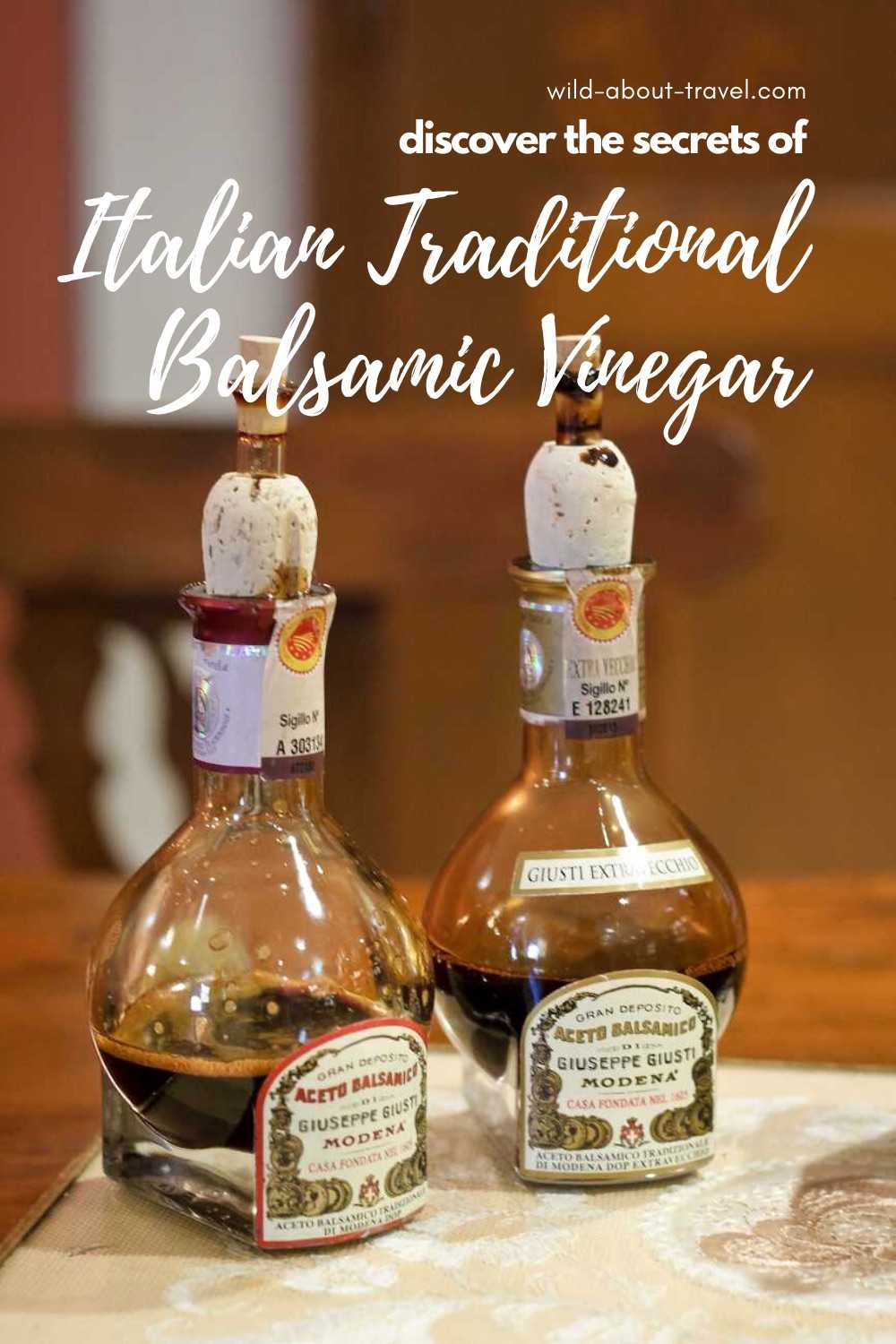Over the last 20-30 years, balsamic vinegar has become a popular Italian product. You can now find it on the shelves of most supermarkets across the world. However, mass-market balsamic vinegar has nothing to do with the noble Traditional Balsamic Vinegar. Find out why.

If I were to ask people what balsamic vinegar evokes to them, I bet the majority would answer “a special seasoning from Italy.” However, this is only partially true. Compared to “normal” vinegar, whether it’s made from grapes or apples, balsamic vinegar is only slightly more sophisticated. The products you find on the shelves, even medium-priced ones, are light years behind Traditional Balsamic Vinegar. Starting from the ingredients up to long and caring processing.
Discover the secrets of one of the most delicious traditional food products of the Emilia-Romagna region.
Aceto Balsamico Tradizionale: nectar of the gods
The difference between “balsamic vinegar” and Traditional Balsamic Vinegar is just one word: “traditional.” You may consider it futile, a linguistic trick. But actually, nothing could be farther from the truth. There’s an entire world in that single word. “Traditional Balsamic” is a gastronomical delight, which needs a very long time, patience, and a fascinating production process.

Perhaps no Italian product is so intrinsically opposed to industrial food. Traditional products are a serious matter in Italy. That’s why there’s even an area called the Italian Food Valley, near Parma.
Aceto Tradizionale Balsamico is a PDO (Protected Designation of Origin) product and is made only of must. It can only be produced from grapes harvested in the Modena or Reggio Emilia areas, and processing has to be made in the region. This area of Italy, where Summers are hot and Winters rather cold, benefits from the perfect climate for the fermentation and aging processes in the casks.
The story of Traditional Balsamic Vinegar
The first official documents mentioning Traditional Balsamic Vinegar date back to the early 17th century, and are deeply related to the powerful Este family’s move from Ferrara to Modena. Nobles, prelates, and the Pope himself introduced this sophisticated elixir in their banquets. And for a long time, the recipes were passed down from one generation to the other by word of mouth.
Until 1863, when Giuseppe Giusti, from the family which still runs the oldest handcrafted production, wrote down the first Aceto Balsamico Tradizionale’s recipe.

According to Giuseppe Giusti, the production of an exceptional elixir is based on three essential elements:
– the quality of grapes, which have to be local Lambrusco and Trebbiano, grown and harvested in the area of Modena;
– a variety of wooden barrels. A barrel set made of 5 different kinds of wood (oak, chestnut, cherry, juniper, and mulberry). That’s a key factor very because, over time, vinegar will get a mixed and more complex flavor;
– time and patience. Giuseppe Giusti stated that after 10 years, traditional balsamic vinegar is good; after 30 years, it’s better, and after 50 years, it gets excellent. Finally, after 100 years, you have the most precious nectar.
More than 150 years later, these principles are unchanged.
The process of Traditional Balsamic making
It takes a long, loving process to produce this unique condiment.
The first step consists in cooking the grapes juice in large, open containers. The juice gets heated by fire between 12 and 24 hours, ending with a juice reduction by about a half.
The second stage is alcoholic fermentation through the use of yeasts.
After that begins the aging in wooden casks. A battery for traditional balsamic vinegar consists of five barrels made of different woods and progressively smaller. Over time, the juice becomes more concentrated and thicker and is moved to the smaller casks. The process lasts several years until it reaches the desired aging.
Where is Traditional Balsamic Vinegar produced?
The authentic balsamic vinegar is produced in a small area of the Emilia-Romagna region, at the heart of the Italian Food Valley. This is the zone, roughly in between Milan and Florence, producing many of Italy’s renowned delicacies: Parma ham, Parmigiano Reggiano, and many others.
Unlike the mass-market balsamic vinegar, the production of traditional balsamic vinegar must follow strict guidelines. The Consortia of Modena and of Reggio Emilia, the only two areas where Aceto Tradizionale Balsamico can be produced, are the institutions issuing the guidelines. Actually, the role of the Consortia is to guarantee the authenticity of this precious elixir.
How to recognize authentic Aceto Balsamico Tradizionale
Thanks to the Consortia guidelines, finding out if balsamic vinegar is the Traditional one is easy. It’s all in the shape of the bottles and aging.
While the processing is mostly the same, the rules applied to the PDO products are slightly different between Modena Traditional Balsamic Vinegar and the one produced in Reggio Emilia.
Aceto Balsamico Tradizionale di Modena
The elixir only comes in two agings:
– 12 years old, also called “affinato“
– 25+ years old, named “extravecchio“.
Furthermore, you can identify the Traditional Balsamic Vinegar of Modena from the distinctive bottle. It’s a lovely bottle, designed by Giugiaro, the famous Italian automobile designer who styled cars of world-renowned brands such as Maserati, Lamborghini, and Ferrari.
Aceto Balsamico Tradizionale di Reggio Emilia
In Reggio Emilia, you can also identify traditional balsamic vinegar from its characteristic bottle. In that area, three colors identify the specific aging: Lobster (minimum 12 years), Silver (15 years minimum), and Gold (25+ years).
Considering how long the loving process takes, Traditional Balsamic Vinegar is expensive (check the price here). However, this delicacy is so fragrant and rich that a few drops are enough. And a bottle will last a long way.
If you’re planning a trip to Italy and spending a few days in the beautiful Emilia Romagna region, I strongly recommend you experience a visit to a producer. You’ll discover the secrets of this centuries-long tradition and have a Traditional Balsamic Vinegar tasting session, which is a real sensorial experience.
_______
Wild About Travel is a participant in the Amazon Services LLC Associates Program, an affiliate advertising program designed to provide a means for sites to earn advertising fees by advertising and linking to Amazon.com
Pin for later!





